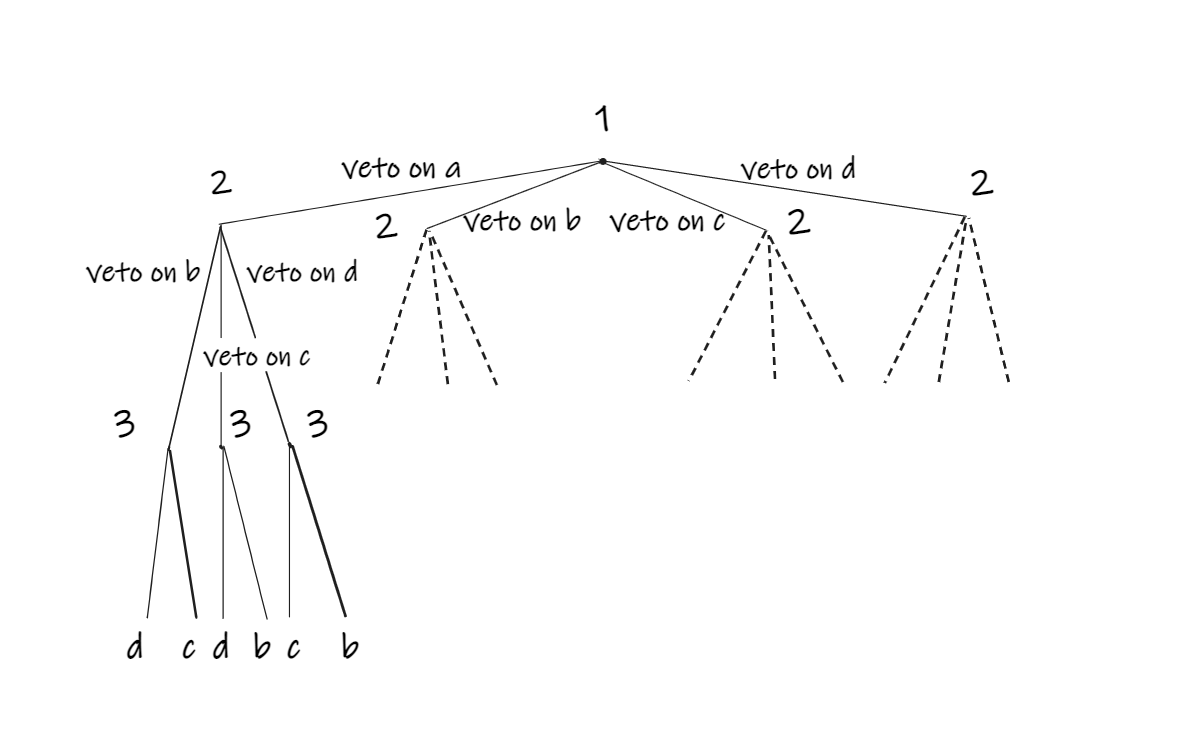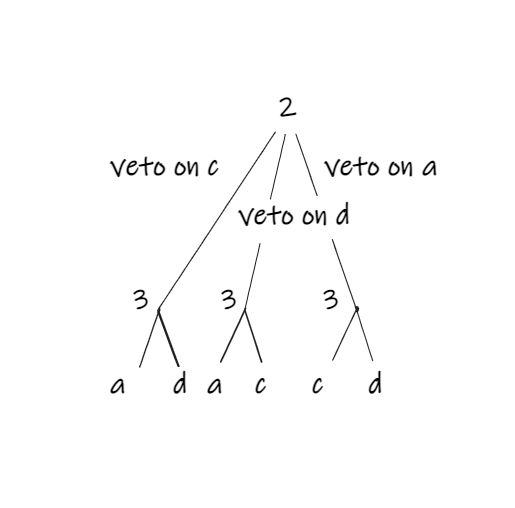Let us give a convenient scheme for describing this game.

Each non-final vertex of this game tree corresponds to some player who has the right to choose any of the following vertices. Each final vertex defines an elected candidate.
Player 1 can make good use of the information he has. Namely, if player 1 is especially careful and vetoes the worst candidate d for him, then candidate b will be elected (the preferences of players 2 and 3 on outcomes a, b, c determine the same order). However, player 1 can hope for a better outcome than choosing b. Indeed, if a veto is imposed on b (exhibiting complex behavior), then the following game situation will arise for players 2 and 3.

If player 2 does not pay attention to player 3's preferences, he will veto c in a cautious manner, thereby forcing the election of d, which means the complete defeat of player 1. But due to his awareness, player 2 has the ability to anticipate the behavior of player 3, and in this case, the optimal choice is a veto on d, ensuring the election of a. Thus, the outcome of the game with complex behavior is the election of candidate a.